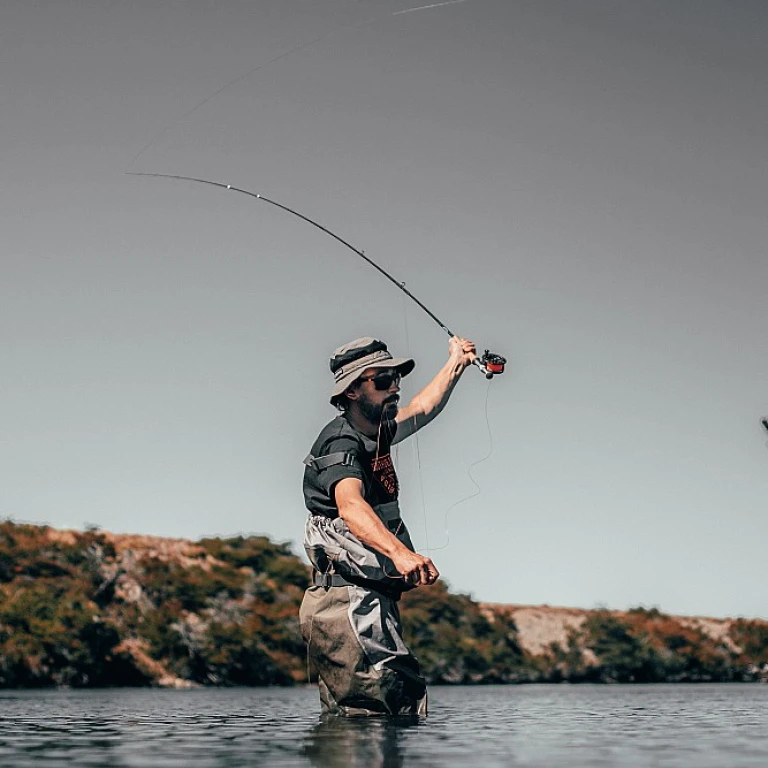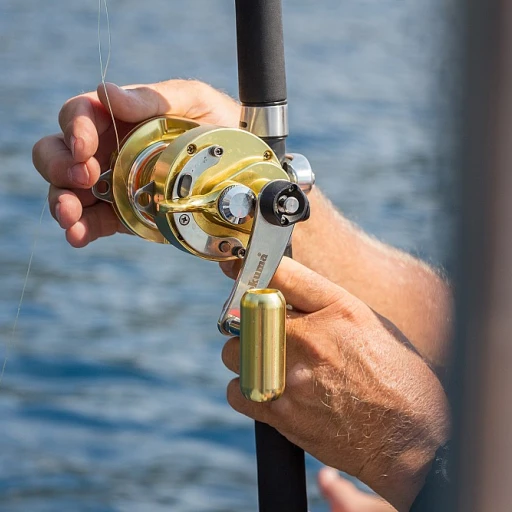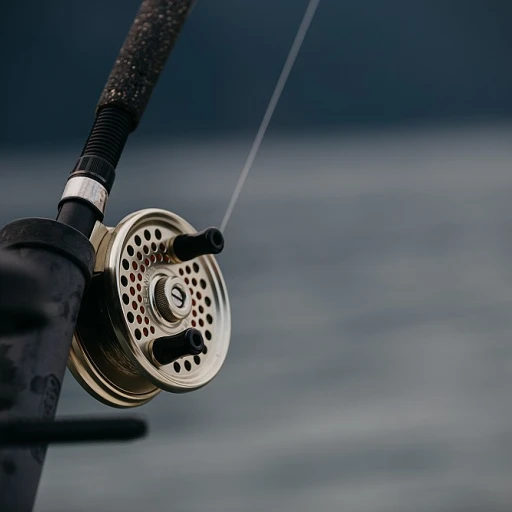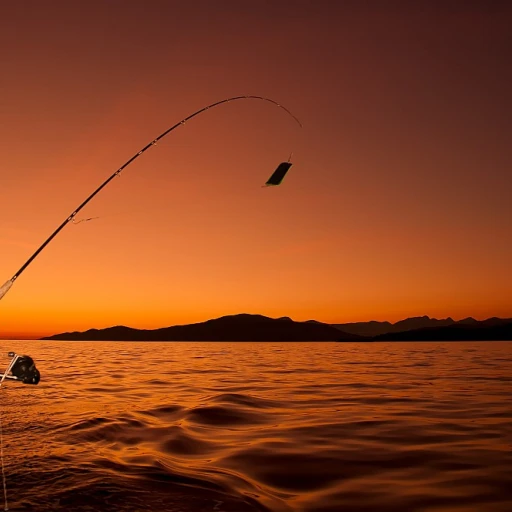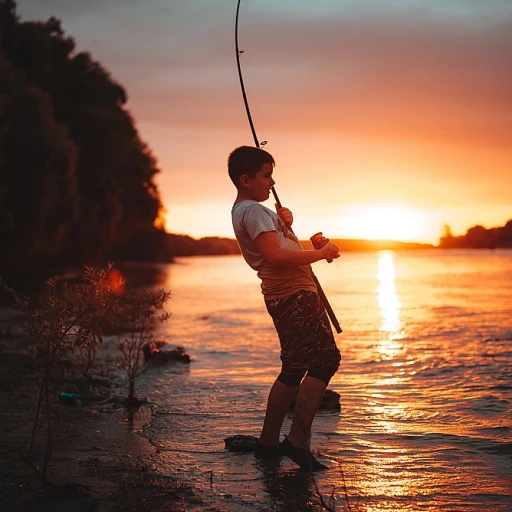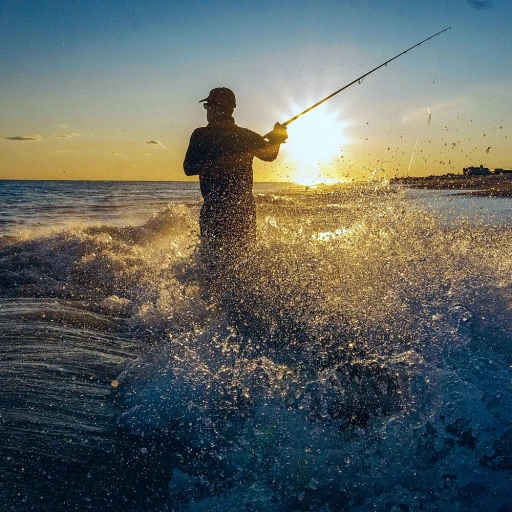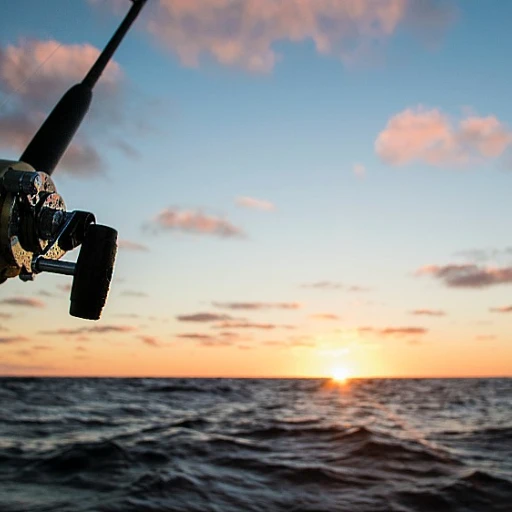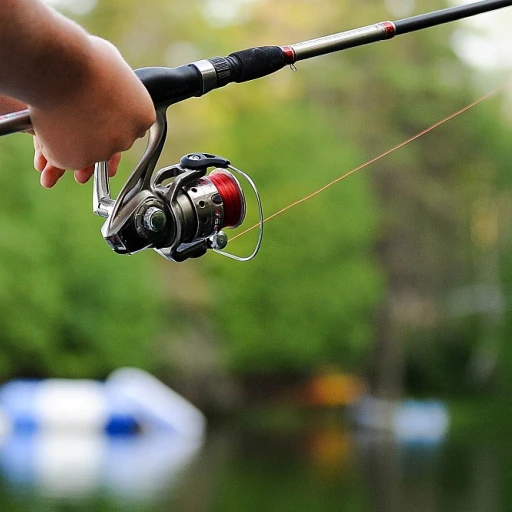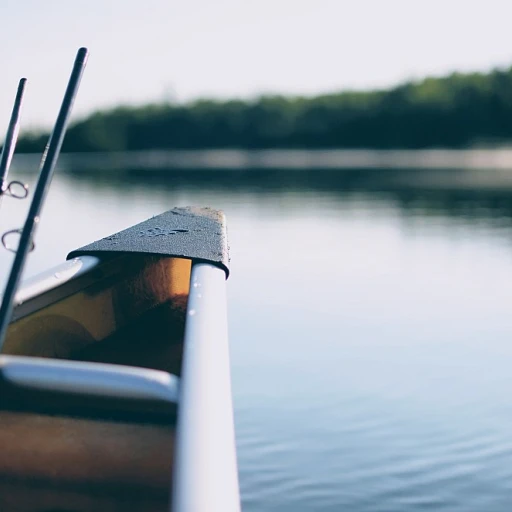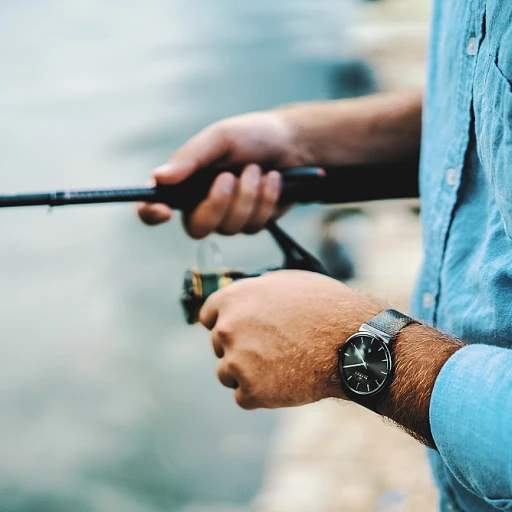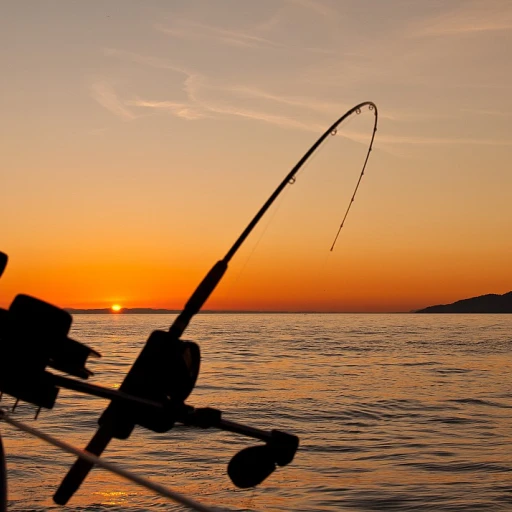Habitat of the channel cat
Prefered habitats for channel cats
If you've ever wondered where to find channel cats, they're usually chilling out in various water bodies across North america. You'll find them in places like the Mississippi river and countless lakes and ponds. They love rivers with slow-moving currents and deep holes, where they can cozy up and scavenge for a meal. Fun fact: In the united states, channel catfish are found in at least 45 states! This makes them a common target for anglers far and wide.
Certainly, one of the top places to cast your line is around riverbank structures. These provide excellent hiding spots for the channel catfish to ambush their prey. You can learn more about these productive spots by checking out this article on the secret to your next trophy catch.
What’s neat about channel cats is they can adapt to less-than-ideal water conditions. Whether it’s in a cozy pond or a bustling river, they seem to manage just fine. That being said, they do have some preferences: they favor clear to slightly murky water with a temperature range between 75°F and 85°F. Warmer waters in states like Texas or Florida can mean more active and feisty fish!
Moreover, if you venture into densely vegetated waters, you might just spot them hiding among submerged logs or rock structures. In places like Iowa or Illinois, where the Mississippi river meanders through cities like Moline and Rock Island, the varied terrain offers excellent habitats for these cats.
Keep in mind that these are just a few examples of their favorite spots. To get them biting, you’ll need to understand their behavior, which is heavily influenced by the environment they’re in. Stay tuned for tips on the best bait to reel them in.
Best bait for catching channel catfish
Best bait types for luring channel catfish
Catfishing is all about getting the right kind of bait in the water. You've got your channel catfish (also known as ictalurus punctatus) that just can’t resist a good chunk of cut bait. What's cut bait, you ask? It’s essentially pieces of fish—could be shad, suckerfish, or blue catfish—that have been chopped up. These bits of fish create an irresistible scent trail in the water. According to Duane Raver, an expert in catfish species from Iowa, the smellier the bait, the better it will work.
Live bait, the irresistible option
Live bait options like nightcrawlers, minnows, and crayfish are equally fantastic for catching channel cats. Especially in warmer water temps, channel catfish will often go for these because they mimic the natural prey they hunt in rivers and lakes. Fishing with live bait can be particularly effective during the early morning or late evening when these fish are most active.
Chicken liver: a timeless classic
If you’re talking about catfish, you can't forget about chicken liver. This bait is highly effective because it releases oils and blood into the water, creating a powerful scent trail. It's a favorite in states like Texas, Florida, and right here around the Quad Cities region in Illinois and Iowa. Many seasoned anglers, including those fishing in the Mississippi and Missouri rivers, swear by chicken liver for its consistent success rate.
Stink baits and commercial options
For those who don’t mind getting their hands dirty, stink baits are another option. These are concoctions of various smelly ingredients mixed into a doughy or pasty substance. The strong smell draws in channel catfish from quite a distance. It's also worth mentioning that some commercial baits are specifically designed to target catfish. These products are tested and optimized to produce the best results.
Keeping it natural with insect larvae
Sometimes, going “au naturel” is the way to go. Insect larvae like catalpa worms are excellent for enticing channel catfish, especially near the banks of rivers and ponds where these larvae naturally fall into the water. Studies show these baits work exceptionally well in smaller bodies of water like park lakes and ponds.
Specific use cases and experiences
Take a trip to the Moline area, and you’ll hear about how folks have been pulling in behemoth channel catfish using nothing but basic, easy-to-find bait. John from Rock Island Arsenal talks about how he caught a 15-pounder with just hot dogs soaked in garlic. It may sound bizarre, but sometimes unconventional methods yield spectacular results.
For more insights on ensuring you get your bait to the right fishing spots, check out our article on riverbank structures and their impact on trophy catches.
Top fishing spots for channel catfish
Prime locations to hook your channel cat
When you're out hunting for channel catfish, also known by its scientific name ictalurus punctatus, it’s important to know where to find them. Rivers and other bodies of water in North America are prime habitats. Channel cats prefer locations with a moderate current and plenty of food sources. You’re likely to find them in places like Moline on the Mississippi River, or around the Texas river banks.
Spots conveted by avid anglers include Rock Island Arsenal and Village East Davenport. If you’re exploring Iowa or Missouri River, don’t forget Riverbend Commons and parks like the famous Park Lake near Moline offer abundant fishing opportunities. Those visiting Santa Barbara Harbor or Duane Raver hotspots will not be disappointed either.
Another worthwhile spot is Centre Station near the Mississippi. This area's blend of flowing water and deep pools makes it a haven for channel catfish. Also, places like Quad Cities and their numerous lakes and ponds, including quaint park lakes in Bettendorf, contribute significantly to your chances of having an exciting fishing day.
In the Midwest, lakes like those near Florida and various ponds offer clear and warm waters in which channel catfish thrive. Overall, keep an eye on water temperature since catfish generally prefer warmer waters. This helps track them effectively, especially during early mornings or late evenings when they're more active.
Happy fishing, and may your size channel catfish be plentiful and rewarding!
Seasonal patterns of channel catfish
Understanding channel catfish behavior through the seasons
Anglers chasing channel cats should know their seasonal habits to boost catches. Channel catfish (Ictalurus punctatus) follow distinct behavioral patterns throughout the year, heavily influenced by water temperature.
Spring: Channel cats, like many fish, become more active as water temperatures rise. In the spring, these fish move to shallower waters to spawn. According to the Fishing Magazine, when water temperatures reach 70-75°F, spawning activity peaks. Males create nests, usually in cavities or under submerged objects.
Summer: Post-spawning, these catfish retreat to deeper, cooler waters during the day's heat, coming to shallower areas to feed at dawn and dusk. Most anglers recommend night fishing during the summer. Cut bait and live bait are effective, mimicking the catfish's natural prey.
Fall: As temperatures begin to drop, channel cats are on the hunt, storing energy for the winter. This is prime time to catch larger fish as they feed more aggressively. During the fall, channel catfish are often found in river bends, channels, and any structure with ample cover.
Winter: In the colder months, channel cats become less active. They move to deeper water, where the temperature is more stable. Fishing is tougher but not impossible. Slow presentations with bait close to the bottom can still yield results. Ice fishing in Northern states also remains a steady option for dedicated anglers.
Understanding these seasonal behaviors equips fishermen to adapt their strategies and improve their chances of reeling in more channel cats year-round.
Studies reinforce these patterns. For example, Ictalurus punctatus tend to follow thermoclines in lakes and ponds, seeking optimal comfort and feeding conditions (Duane Raver, U.S. Fish and Wildlife Service).
Such seasonal insights will change your game, making you a seasoned angler ready to tackle channel catfish in any condition. Adapt your bait (cut bait, live bait), timing, and location to match the season and you'll see a more successful catch rate.
Fishing techniques for channel catfish
Effective methods for landing a channel cat
Catching a channel catfish, also known as Ictalurus punctatus, requires a mix of knowledge, technique, and patience. With these tips, you'll soon be reeling in these fish with ease.
1. Bottom fishing tactics
Channel cats are bottom dwellers, meaning they spend most of their time near the river or lake bed. This makes bottom fishing one of the most effective ways to catch them. Use a slip sinker rig, which allows your bait to sit on the bottom while providing sensitivity to bites. Use cut bait, shrimp, or chicken liver, which are known to attract these fish.
2. Night fishing strategies
Channel cats are more active at night, particularly in the shallow waters close to the shore. Setting up your fishing gear in these areas at dusk can significantly increase your chances of making a good catch. Make sure to use a strong rod and reel, as these fish can put up a fight when hooked.
3. Drift fishing approach
Drift fishing is another great technique, especially in larger bodies of water like the Mississippi River or big lakes. This involves allowing your bait to move with the current, creating a natural presentation that's hard for the catfish to resist. A drift rig, with bait fished off the bottom, can be particularly effective. Adjust your weight according to the water speed and depth.
4. Using the right gear
When targeting channel catfish, having the right equipment is crucial. Opt for a medium-heavy to heavy rod, with a strong, abrasion-resistant line. A circle hook is often recommended because it tends to hook the fish in the corner of the mouth, reducing injury and making it easier to release the fish if needed.
5. Studying water temperature and weather conditions
Channel catfish are sensitive to changes in water temperature. They prefer warmer water, with optimal temperatures ranging from 70-85°F. Check local weather and water temperature reports before heading out. As seasons change, so do the preferred fishing spots, so having this information can greatly improve your success rate.
By incorporating these techniques, your next fishing trip could yield that trophy channel catfish you've been dreaming of. Always remember to adapt and adjust your approach based on the conditions and the behavior of the fish.
Identifying channel catfish
Distinctive features of the channel catfish
Identifying a channel catfish, or Ictalurus punctatus, can be a thrilling part of your fishing adventure. These fish are known for their deeply forked tails, which set them apart from other catfish species. They sport a sleek, olive-gray body with dark spots on the sides, though these spots may fade as they age and in larger specimens.
Fin-tastic clues
The channel catfish's anal fin is also a giveaway. Unlike the blue catfish, which has a straight-edged anal fin with 30-35 rays, the channel cat’s fin is curved and typically has 24-29 rays. Male channel catfish can look even more distinct during spawning season as they develop a stronger hue and a more muscular build.
Head shape and sensory barbels
Another easy identifier is the head shape and barbels—the whisker-like sensory organs around the mouth. Channel cats have a rounded head compared to the flatter heads of blue catfish. Their barbels are black, helping them sense food in murky waters, a useful feature in rivers like the Mississippi or Missouri River.
Size matters
Don't confuse the channel cat with the flathead catfish, even though they might be found in the same locations like lakes and rivers in the United States, including Moline or the Quad Cities. Channel cats generally range from 2 to 4 pounds, although they can grow much larger. According to fishing expert Duane Raver, the record for channel catfish in North America exceeds 50 pounds!
Region and water type
Geography can also help in identifying them. Channel catfish are abundant in the Midwest, Texas, and southern states like Tennessee and Florida. They thrive in a variety of water bodies, from the slower currents of park lakes and ponds to the faster-moving waters of the Mississippi River.
Seasonal clues
For those keen eyeing for channel catfish, knowing the season helps as well. They spawn in warmer months, from late spring to early summer, when water temperature ranges from 75 to 85 degrees Fahrenheit. During this time, their physical changes are more noticeable, making identification easier.
Conservation and regulations
Regulations and rules to follow
Fishing channel catfish isn't just about having the right gear and technique—knowing the regulations is crucial. The Iowa Department of Natural Resources (DNR) imposes specific regulations on the size and number of channel catfish you can catch, ensuring that the fish populations remain sustainable. For example, in Iowa, the daily bag limit for channel catfish in inland waters is 8 fish per day.
In other states like Florida and Texas, regulations can differ significantly. For instance, Texas allows for a daily bag limit of 25 catfish, but there are specific restrictions for certain bodies of water. Keeping up-to-date with these regulations is essential to avoid fines and contribute to conservation efforts.
Sustainable fishing practices
Duane Raver, a well-regarded name in the world of catfishing, emphasizes the importance of practicing sustainable fishing. Raver notes that “catch and release” should be a common practice among anglers, especially when targeting larger fish. This helps maintain the population and ensures future generations can enjoy the sport. It's not only about playing by the rules but also respecting the water and its inhabitants.
Using appropriate baits and techniques can also promote sustainability. For example, cut bait is favored for catching a variety of catfish species but can also attract non-target species. Anglers should be mindful of their impact on different catfish species and other aquatic life.
Impact of local regulations on fishing spots
The impact of these rules and practices on popular fishing spots cannot be overstated. Riverbend Commons and the Rock Island Arsenal in the Quad Cities area have seen thriving fish populations because of stringent regulations. In areas along the Mississippi River and Missouri River, adherence to guidelines has led to sustainable fishing environments that support both recreational and local fisheries.
By being informed and compliant with local regulations, you are not only protecting channel catfish but also contributing to a balanced ecosystem. Whether you're fishing at Moline, Bettendorf, or the numerous lakes and ponds across North America, understanding and respecting these rules is critical.
Catch limits and size restrictions
Another critical aspect of conservation is following size restrictions. For instance, channel catfish typically must be at least 12 inches in states like Illinois and Iowa to be harvested. This means juveniles are given a chance to grow and reproduce, ensuring the future of the species.
Experts like Dr. Thomas Kwak from North Carolina State University emphasize that such size limits help in maintaining a balanced aquatic ecosystem. “Size restrictions are not about limiting the angler but about ensuring long-term benefits for everyone,” he says.
Case study: mississippi river success
A case study from the Mississippi River region demonstrates effective conservation practices. Catfish populations in this river have been consistently robust, attributed to strict adherence to fishing regulations and mindful fishing practices by local anglers. The Mississippi River is known for its diverse catfish species, including the blue catfish and the channel cat, making it a hotbed for catfish fishing enthusiasts.
The river's management serves as a prime example of how sustainable fishing practices and strict regulations can lead to a thriving fishery. Local authorities continue to monitor and adjust rules as needed to maintain the healthy population of channel catfish and other game fish found in these waters.
Personal stories and expert insights
Heartfelt angler tales
Picture this: It's late evening, the sun dipping below the horizon, and I'm out by the river with my old man. He hands me my first rod, looking ever so patient. 'Remember, it's all in the patience, son,' he says, eyes gleaming with anticipation. We cast our lines, using the perfect bait for channel cats. That day's haul? Two hefty channel catfish, their dark spots on the sides glinting in the dimming light.
Channel cat enthusiasts across North America have stories like this, each with its flavor. Like Duane Raver, a well-known expert, who inspired many with his dedication to fishing. His insights have shaped how many modern anglers approach fishing for channel cats.
Experts' words of wisdom
Stephen Moline, an acclaimed biologist specializing in the Mississippi River, states, 'The key to understanding channel catfish is studying their behavior in varied waters. From midwest rivers to the quiet lakes in Iowa, every environment offers a unique challenge.' His work emphasizes the importance of recognizing seasonal patterns and respecting the habitats of these resilient creatures.
Community voices
The Quad Cities fishing community is tight-knit, with many sharing tales and tips about 'fishing channel catfish.' Their favorite spots range from the Mississippi River near Rock Island Arsenal to smaller lakes and ponds in local parks. These anecdotal nuances highlight the unique and varied approaches different fisherfolk use to catch channel cats.
Bettendorf angler, Joe Martinez, swears by cut bait fished from the bottom during the twilight hours, while Emily Collins from Davenport caught her largest channel catfish in Illinois using a secret homemade bait she inherited from her grandpa.
Challenges and triumphs
Yet, not all stories are filled with success. Some days, despite perfect conditions and the ideal bait, the channel cats remain elusive. As John from Tennessee recounted, 'I remember spending an entire day out by a park lake with nary a bite. But that's fishing for you – one moment you're all high hopes, the next, it's a lesson in patience.'
Personal anecdotes with a twist
One fascinating saga involves Alex, a young angler from Florida. He spent months trying to catch a monstrous blue catfish rumored to inhabit a local river. His determination paid off when he finally landed a 50-pound giant, thanks to tips he gathered from seasoned pros.
Whether recounting heartwarming first catches or relaying tips from experts, these stories paint a vivid picture of the passion and community spirit in the channel catfish world. It’s this blend of patience, skill, and shared wisdom that makes channel catfish fishing more than just a hobby – it’s a legacy passed down generations, always waiting for the next tale to be told.

